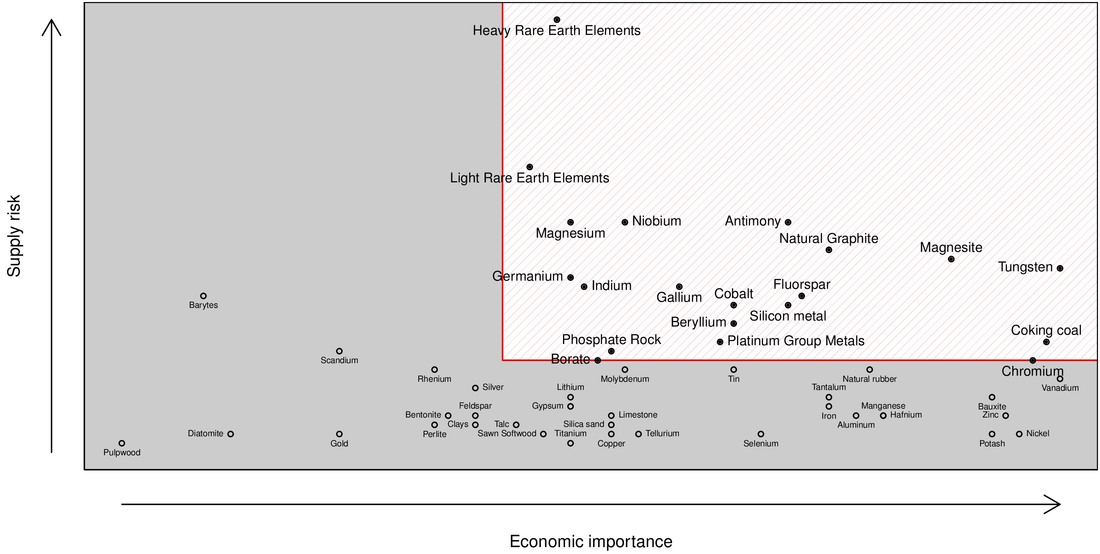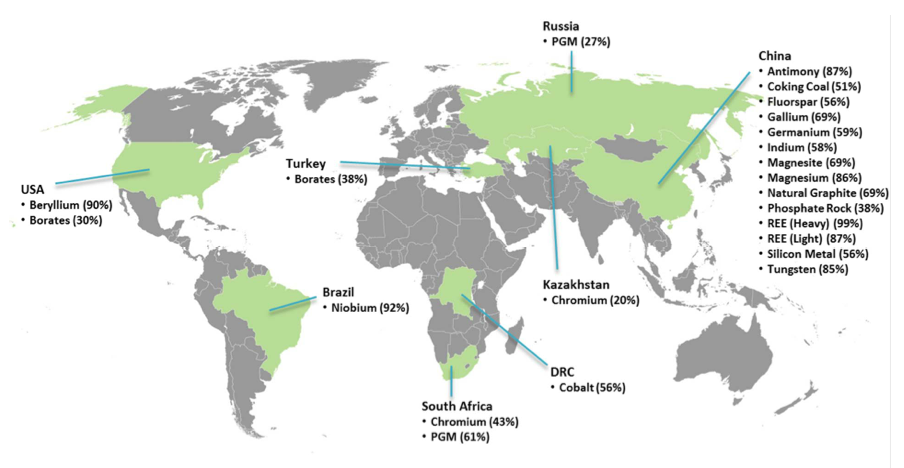|
The great thing about circular economy, and we owe this to the hard work of the Ellen MacArthur Foundation, is the fact that it has reached out to the top management of companies and policy making bodies. This is a sign that a change in mindsets is happening; people that understood the world in a very narrow and simplistic way, the economists, are now getting the 'bigger picture' and they see good business in it. This is why any effort to define what circularity is and entails, has to capture such broader understanding and avoid simplifications; we can't just give up 3 long years of outreach because we are afraid of tackling complexity.This regarding recent efforts to develop tools to assess circularity. One of the core elements of the circular economy, its bringing back compexity into an area that has been famous for over-simplifying reality and pretending to shape our daly lives based on this. Complexity means bringing all elements into the analysis, seeing the feedback loops that exist in the system, acknowledging multiple scales and the role of context. This calls for creative, risky and radically new tools for analysing complex phenomena such as circularity. Old tools used in the old model are irrelevant for a new approach such as the circular economy. Therefore, efforts to understand circularity can't fall into the simplicity trap of assuming it belonhs to one single scale or to one aspect of the economic activity. His is specially relevant for assessment or measurement efforts. They are an important decision-making tool in transition processes such as achieveng a sustainable development path. This means that these actors rely on them to plan, do and communicate. In this sense, such process is only as good as the tool to measure it. In order to evaluate how good a tool is for assessing something it is important to know how close it is to the the original idea that it is assessing. Several initiatives are being developed to assess circularity and it seemed as a relevant topic for my master thesis. What I did was to evaluate a group of tools already created in terms of how 'true' were them to the 'expert' idea of circularity to see if they would effectively contribute to the transformation of the economic system. In the coming days I will share the final report and short versions of my main findings, hoping to contribute to the debate about what is circularity and how can we move towards it. So stay tuned! Cheers,
1 Comentario
One of the main reasons why we are talking about the Circular Economy today is because of material insecurity. This term is connected to the fact that many materials that are used in consumer products and things making up our physical world are critical. Different people have raised this issue over the past years and since 2010, the European Union has specifically identified what are these materials. For the European Union (2014) a material was defined to be critical taking into account two aspects: supply risk and economic relevance. The first one is defined as the concentration of a material supply in a country with poor governance which could lead to unstable supply. The second element depends on the uses of the specific material and how important these uses are to economic mega sectors. What are the most critical materials from an European perspective and who are the bigger suppliers? Many of us are not familiar with these names but almost everybody uses something that has some of these materials inside. For example, according to Namibia Rare Earths Inc company only Rare Earths Elements are used in camera lenses, hydrogen storage, electric motors for hybrid cars, color tv screens, shielding in nuclear reactors or steel production. As it can be seen, uses are very different but very relevant for our today's life style. Other critical materials for Europe, that are not that exotic for the common citizen are natural rubber, pulpwood and swan softwood.
According to the European Union there are three groups whose demand is going to grow very strongly in the coming years: niobium, gallium and Heavy REE. Niobium is used as an input in the aviation and aerospace industries (USGS, 2014). Gallium, on the other hand is used in the electronic industry, especially for smartphones and not so high tech uses such as mirrors (USGS, 2013). Heavy REE are used also in a range of applications that you can find here. Why is material insecurity driving Circular Economy? If these materials are not readily available in a raw state then where should businesses look for them, one might ask. The obvious answer would be to look at the products that are made of them. So, if we want to reduce the material insecurity of the European industries that use these materials, a transformation needs to be implemented: reduce supply from external sources and replace them within the economic activity. The answer to these to tasks is given by the Circular Economy and by a circular approach to innovation. Elements such as reuse, remanufacturing and recycling have to be incorporated in the development path that is to be followed for a future where critical raw materials are not a restriction for value creation within society. These approaches reduce use of materials, replace other materials, creates value from non-material activities and allows an economy to work under sustainability principles. Cheers, Transitioning to a Circular Economy might be a dream come true for a lot of sustainability students, professionals, activist and for many people as well. News regarding the negative consequences of the linear economy are everywhere: climate change, deforestation, displacement, conflicts over resources, limited access to water, and so on. The drivers of these problems have been highlighted for a long time and action has not been taken yet. Many people are asking themselves why, for example James Greyson in this post, and answers are the same: is too costly, is too difficult, is too soon. Nonetheless, change is in the air and it looks round.
The Circular Economy is not an invention in itself, it is a clever name given by some savvy people to a specific way of thinking our world and our behavior which basically acknowledges the material limits of our world, the material-lessness of our well being and the complexity of how our world works. This way of thinking started a long time ago, but only until now people seem to be listening. And a big sign of this, in our opinion is the fact that the European Commission has issued a communication package laying the ground for a transition towards a Circular Economy, to this new way of thinking. It is important to understand that this is only one step and many elements are still not fully developed (as Maxine Perella highlights here), but it is important to point out that one of the big players in the world economy, the European Union, is recognizing the relevance of a transition towards the Circular Economy. In this post we want to address two elements, the European Commission understanding of the Circular Economy and how they are thinking about innovation for the circular economy. Just to summarize, for the European Commission, the Circular Economy:
Based on these arguments, and having in mind that there are different type of barriers that need to be addressed including technology, financial, information and cultural obstacles, the European Commission calls for Circular Innovation. Despite not using this term, the communication stresses the importance of a circular approach to innovation and provides examples of what it entails:
The Circular Economy is not new, their principles, ideas and proposals have been addressed long before 2014 when the European Commission launched its communication, however the actions that need to be taken are the novelty of this approach. How are we going to overcome the long standing barriers and obstacles that these approaches have faced in the past 40 years, is the key challenge towards a Circular Economy. The key question here is how are we going to manage the multilayered (product/services, processes, business models, systems) innovation process that is described in the communication and that is going to bring us all to a sustainable system; in other words, how are we going to implement Circular Innovation? Some hints are provided in the section 2 of the communication which aims at setting up an enabling policy framework that will foster research, encourage investments and provide instruments to businesses and consumers for action. Here the actions proposed towards Circular Innovation are:
In the following sections, the communications emphasizes the role of waste and recycling in paving the way towards a Circular Economy but having in mind that this road will lead Europe to a zero-waste state, it is important to keep in mind the measures and incentives should aim to reduce waste to its minimum level. Avoiding perverse incentives should be at the top of the agenda. Cheers, |
Archives
Agosto 2019
Categories
Todo
|


 Canal RSS
Canal RSS